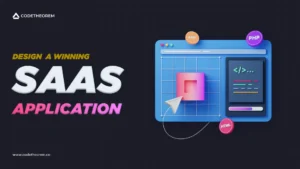Article content
Introduction
Whether you own a startup or an established business, a product roadmap is essential when working on a project. It helps align all the members from different departments involved. Moreover, it informs the team about the critical checkpoints and the ultimate goal. An effective roadmap always works like a guide. Also, it helps answer all the vital questions that might arise when developing a product.
Thus, it is critical to understand the importance and how to create a product roadmap. This blog is for you if you’re unfamiliar with the basics of a product roadmap. So, keep reading!
What is a Product Roadmap?
A product roadmap is a clear picture of the product development process. It includes all the steps, phases, and milestones to achieve throughout the process. Besides, it keeps you and your team on track. What’s best is that it defines the what and why of the product development strategy to all the stakeholders.
Moreover, it is easy to use and understand this tool. Consequently, it gets easier to present the product plan and product strategy to anyone at any stage.
Who is Responsible for a Product Roadmap?
It is the product manager who is responsible for creating a road map. A product manager is the one who drives it. Since they serve as the product strategy lead, their duties include the following:
- Putting the product ideas together.
- Gathering relevant data
- Ensure that the team members are familiar with all strategic details. Also, they guide the planning discussion.
- Prepare the stage for the roadmap planning session.
- Coordinating the roadmap planning meeting. It involves inviting all the participants, being the host, keeping the meeting on-topic, etc.
- Communicating the strategic vision for the product user experience. This will help all the participants understand the business objectives. As a result, they implement those into the roadmap plan.
Additionally, you can involve a relevant stakeholder, expert developers, and the product owner. Each of them has an important role to play in product roadmap development.
What Makes a Successful Product Roadmap?
There are three main and vital components of a successful product roadmap. We will discuss them ahead.
1. Product Vision
A good roadmap always has a north star. It must have a goal that guides the whole team. Also, it gives them a purpose. Now, what makes a good product vision? An ideal product vision must be:
- Aspirational
- Purposeful
- Achievable
- Customer-Centric
- Concise
- Well-documented
2. Timelines
Every product roadmap template should include timelines for every element. From features to projects and milestones to goals must have specific time caps. Hence, it could be monthly, quarterly, annually, etc. But, there need not be particular start and end dates. Besides, the most important thing is for your team to commit to timely delivery.
3. Product Features
Features inform the team members regarding what to build to reach their goals and milestones. Note that features are considered to be high-level goals rather than individual tasks.
Types of Product Roadmaps
Now that we’ve covered all the essential information about project roadmaps, let’s look at their types. Although there aren’t many, the two popular product roadmap types are:
1. Waterfall Product Roadmap
A waterfall project roadmap is used for long-term commitments. Moreover, it’s an approach to building specific features within a particular timeline. It entails a clearly defined execution sequence with project phases. The phases don’t advance until a step receives final approval. Why? Because once a phase is completed, it gets challenging and costly to revisit a previous stage.
The waterfall product strategy follows a linear formula. It works best for projects that have predictable, recurring processes. And yet, it may lead the product management team unable to adjust faster than competitors. Also, the only drawback of a waterfall product roadmap is that fixing bugs can be painful if your team is entirely focused on the next phase of work, mainly if the team is fully occupied with building new features. And even more if always pressing forward to the next stage.
2. Agile Product Roadmap
An Agile project roadmap is an iterative approach. It focuses on continuous releases that implement customer feedback. Also, what’s best about this approach is that it is easy to adjust during each iteration. This promotes better usability, velocity, and adaptability.
Since today’s customers require rapid responses and changes, an Agile product roadmap offers more flexibility. Also, it promotes easy collaboration among various teams and members.
How to Create a Product Roadmap?
Creating a product roadmap is not too complicated. But, it can be challenging for you if you are new to the process. Here is an overview of all the steps involved in creating a product roadmap.
1. Define Project Goals
Being clear about your project goals is very important. There could be many possibilities depending on what you’re building a roadmap for. Question: Is it a new product, or you’re just revamping an old one?
If it is a new product, you need to start ideating. Furthermore, you must define the product MVPs so that others can use and test the product functionality. Minimal Viable Products are important roadmap assets. Hence, you must well-define their priorities.
2. Keep it Clear and Concise
The product development will be smoother only if your team stays focused on the main goal. But, this can only happen when the team understands the product (UX design/UI design). Also, they need to be clear about their roles in the development process. Thus, you must keep your product development roadmap simple and precise.
You may think that a detailed, step-by-step game plan will lead you to success. But it will only lead to miscommunication. So, if you want it to be detailed, you can use product roadmap tools like the tactical tool and keep the details in the backlog.
3. Get User Stories
Once you and your team have the main goal, you can start the user story and journey mapping. Often it gets challenging to decide where to start and what to focus on. User journey mapping is an interactive way to create a product backlog. So, you don’t have to write a 100-page requirement document. It’s an activity led by a project manager, product owner, or all relevant stakeholders.
You can then create a structure of a product roadmap as:
- User
- Goals
- User Experience / Journey
- Actions
- Stories
4. Determine Product Features and Priorities
You must consider all the features when building a product roadmap for a UI design or UX design project. Also, you need to be clear about the priority of each feature. You must know how soon to wrap it up. As a result, you will be able to perfect the core functions of your product.
5. Epic Categorization
Next, you must set a deadline for each task and feature. Break the tasks into smaller achievable epics. So, you can use an excel sheet for this step. Put all the epics together under defined timelines. Note that large projects may require up to 6 levels. But, for smaller projects, 3 levels are sufficient.
6. Create a Vision Board
Now you need to gather all the elements together on a vision board. Furthermore, present it to the stakeholders and make it accessible to all the participants. Consequently, all the members can track the progress of the product development.
7. Review Your Product Roadmap
Your product doesn’t need to be perfect in one attempt. It’s normal for unexpected roadblocks to pop up. However, you can review your roadmap whenever you encounter a problem. Prototypes can help you here. Or, you could ask questions like:
- Was this problem anticipated?
- Do you have a short and long-term solution?
- What resources will we need to resolve this issue?
Now, your product roadmap may not be perfect. But, with the help of prototypes, you can fine-tune it. As a result, it will turn out how you envisioned it.
What Are the Benefits of a Product Roadmap?
You need a product roadmap because it defines a vision and how you can get there. Also, it informs the team members and stakeholders about the progress at each step. Product roadmaps everyone focused on a common goal. Besides, it ensures managers prioritize tasks, new features, and individual projects accordingly. It’s also vital to communicate product progress and timelines to the organization.
Tips to Improve Your Product Roadmap
1. Keep it Simple
It must be easy to read and digest. The aim here is to provide high-level objectives without too many details. Each feature should include the following:
- Status
- A brief description
- Prioritization
- Timeframe
- Department responsible
- Lead
2. Define Realistic Goals
It‘s essential to set high expectations to motivate employees. But don’t forget that you need to keep your product roadmap realistic. Also, it must align with your human resource capacity.
3. Goal Oriented Collaboration
A successful product roadmap needs collaboration from multiple teams and key stakeholders. So, you can consider calling for a workshop to create a Goal-Orientated (GO) roadmap. They are always outcomes-based. As a result, it helps the project manager to identify and prioritize goals accordingly. GO roadmaps usually show:
- Date: When will the product ship?
- Name: What do you want to call it?
- Goal: What problem are you trying to solve?
- Features: What is the core functionality you need?
- Metrics: How will you know whether you’ve accomplished your goal?
4. Know Your Audience
A single roadmap cannot be for everyone. So you can draw a master project roadmap for your product development team. But before that, you need to do some user research. Also, user research will reveal various critical information to help you better understand your audience. Also, you could create different versions that your various audiences can relate to.
5. Simplify Roadmapping With Product Roadmap Tools
Product roadmapping is a time-consuming process. Therefore, you can use product roadmap tools to automate tasks. This will eliminate the hotch-potch of building and maintaining a product roadmap from scratch. Also, it will save you valuable time!
Here is a list of some popular tools you can use:
Product Roadmap Example
How you visualize your product roadmap depends on how your team works. It also depends on how detailed you want it to be. But remember, the key is to keep it simple. Here are a few product roadmap examples:
1. A product roadmap can be as simple as a prioritized list of features and tasks.
2. You could use an agile product roadmap, a lightly structured product strategy. Still, you have the room to implement user feedback.
3. You can also use a Gantt chart product roadmap. This is the best choice if you want a clear product plan from project initiation to launch. It is a detailed overview of all the tasks involved.
Conclusion
After reading this blog, you can conclude that a good product roadmap is realistic and idealistic. It should be strictly time-bound. Moreover, it must have a north star. Although it can be easy for some to create product roadmaps, it can be challenging if you’re new to the process. You can reach out to Code Theorem. Our team specializes in such technical UX design tasks. We are well-versed in all the steps of creating a product roadmap. Hence, we can create one for you in less time and resources. You can drop us an email or drop a comment below.


















